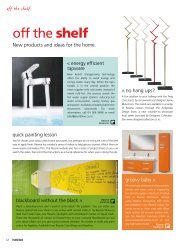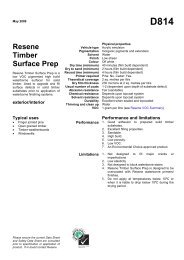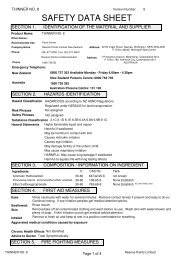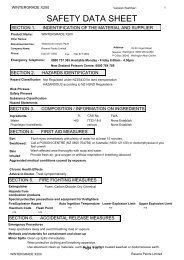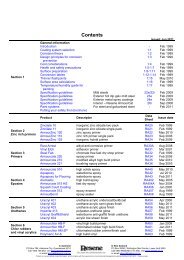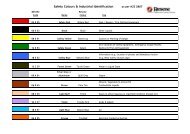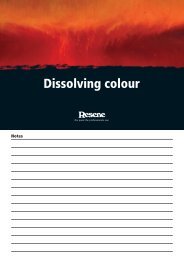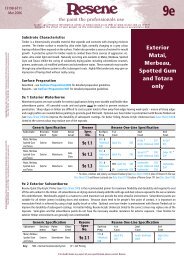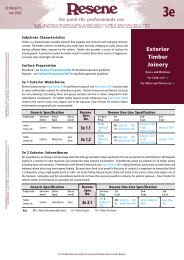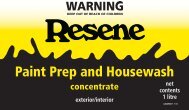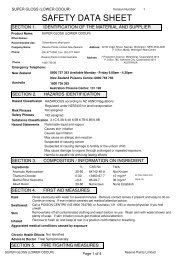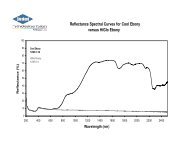Putting your safety first - Resene
Putting your safety first - Resene
Putting your safety first - Resene
- No tags were found...
Create successful ePaper yourself
Turn your PDF publications into a flip-book with our unique Google optimized e-Paper software.
• If <strong>your</strong> child has more severe symptoms, suchas weakness or difficulty walking, seek urgentmedical attention.• Untreated lead poisoning in both adults andchildren can be fatal.• Pets often show symptoms of lead poisoningbefore people. If <strong>your</strong> pet is unwell and a vetdiagnoses lead poisoning, you should see thatall members of <strong>your</strong> household are checkedby a doctor.What to doIf you think <strong>your</strong> child may have been exposed topaint dust, flakes of old paint, soil with paint dustin it, or may have chewed some old paint, youshould ask <strong>your</strong> doctor to check the child’s bloodlead level.Lead may not show up in blood tests if the test isconducted more than one week after exposure, inwhich case other testing, such as porphyrin analysis,should be undertaken.Safety points for removing lead-basedpaintWhatever method you use for removing lead-basedpaint, always take the following precautions:• Keep children and pets away from the workarea and make sure they don’t eat or playwith paint debris.• If you’re removing paint from the inside of<strong>your</strong> house, remove the curtains and furniturefrom the room and cover the carpets beforebeginning the job. After sanding, wet wipesurfaces to remove dust and then use acommercial vacuum cleaner fitted with asuitable dust filter.• If you’re removing the paint from the outsideof a building, make sure all windows anddoors are closed to prevent contaminationinside.• Collect all paint debris on a ground sheetlarge enough to contain all the debris. If you’reworking on a scaffold, tie a sheet underneathto catch falling paint. If you’re removing paintby waterblasting, try to collect all flakes ofpaint from the surrounding area.• Clean the area around the groundsheet witha vacuum cleaner to collect any other paintdebris. Dispose of the contents immediately.After sanding, wet wipe surfaces to removedust and then use a commercial vacuumcleaner fitted with a dust filter.• Do not burn paint debris or timber that iscoated with paint containing lead.• Wrap up all paint debris securely in heavydutyplastic bags.• Provide short-term secure storage for debris.• Contact the local Council before work begins.Paint wastes must be disposed of inaccordance with local Council requirements.Protecting <strong>your</strong>self• Wash <strong>your</strong> face and hands carefully beforeeating food or smoking and change out ofcontaminated overalls (especially if drysanding) when not actually working. Washcontaminated clothes separately.• Wash <strong>your</strong> face and hands and change outof contaminated clothing before handlingchildren.• Wear a hat or cover <strong>your</strong> head (especiallywhen dry sanding) to prevent dustaccumulating in the hair.• The quality and efficiency of <strong>safety</strong>equipment needed to make dry sandingof lead-based paints safe generally meansthat dry sanding is not possible, orrecommended for the DIY’er.9



